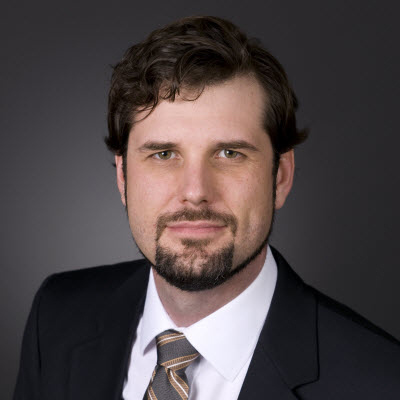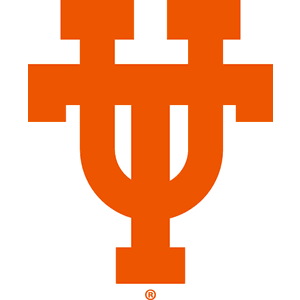Why understanding liquids helps to diagnose and treat disease
When compared under a microscope, a piece of glass and a cup of water look surprisingly similar; the molecules are randomly organized. So why doesn’t glass flow like a liquid? Dr. Thomas Truskett, the Les and Sherri Stuewer Endowed Professor and Department Chair of the McKetta Department of Chemical Engineering at The University of Texas at Austin, is interested in understanding and controlling how liquids behave. His goal is to use this knowledge to, e.g., develop new materials with unusual and useful properties or new methods to for delivering protein therapeutics in dosages that only require a single shot per day. If successful, the latter could be used to help treat a wide range of diseases, from allergies and autoimmune disorders to cancer, without harmful side effects.
Dr. Truskett’s work has demonstrated how molecular scale theory and computation can help accelerate the discovery of novel materials for technological applications and provide a basis for understanding their properties. He and his team have distinguished themselves by revealing how theoretical results on seemingly simple, but carefully chosen, model systems can produce a road-map for experimental collaborators to discover, understand, and develop materials for new approaches or inventions. Their models provide stringent tests for prevailing ideas on the mechanisms controlling the structure and dynamics of the condensed matter systems they study. A long-term aim of Dr. Truskett’s research is to help solve problems that could lead to entirely new materials that improve human health and quality of life.
Current research includes:
-
Protein Therapeutics: Protein therapeutics represent one of the most promising classes of drugs for a wide range of diseases, from allergies and autoimmune disorders to cancer. However, currently there is not a good strategy for creating low-viscosity (freely flowing) liquid forms of these therapeutics in their biologically functional form with doses high enough for single-shot injections, similar to insulin shots for diabetics. Dr. Truskett’s theoretical models of these systems have helped develop -- in collaboration with experimentalists in protein engineering and colloid science -- novel strategies for creating high-dosage, low-viscosity liquid forms of therapeutic proteins appropriate for single-shot injections.
-
Novel Technology: In collaboration with experimentalists in biomedical engineering and colloid/interface science, for biomedical imaging and therapy, Dr. Truskett uses molecular theory and simulation to design gold nanoclusters with characteristics that will help target specific cells and provide strong contrast with blood and tissue for noninvasive imaging. Such clusters are unique in that they are composed of small gold particles held together via a biodegradable polymer. Over time, as the polymer degrades in the endosomal environment of the cells, the clusters fall apart to pieces small enough to be safely cleared from the body via the kidney.
- Fundamental Studies: Dr. Truskett’s fundamental work has far reaching impact. For example, they have developed theoretical frameworks for predicting which types of interactions can lead to materials with specific microstructures and properties, understanding how the properties of fluids change with modifications to their environment, interpreting scattering experiments, and exploring the role of structural disorder in fluid, glassy, and jammed states of matter, as well as many others.
Bio
Dr. Thomas Truskett has enjoyed mathematics, chemistry, and physics since they were first introduced to him in childhood. However, by the time he entered his undergraduate career at The University of Texas at Austin, despite his excitement for STEM disciplines, he felt that he was “fumbling through to figure out what to do.” In college, he quickly became fascinated with the idea that tools of STEM could be used together with engineering principles to help discover entirely new materials, products, and technologies that improve our quality of life.
During his junior year, Dr. Truskett had the opportunity to pursue undergraduate research, inspired by a professor who was developing new theoretical approaches for understanding and predicting the properties of materials in the liquid state. After class one day, his professor pulled him aside and encouraged Dr. Truskett to enter into a career in academics because of his strong performance in class. The encouragement was surprising to Dr. Truskett because he had never considered a career as a researcher or professor. This started him on a two-decade journey that included doctoral studies at Princeton University focusing on modeling liquids, glasses, and “soft” condensed matter, and postdoctoral work at the University of California, San Francisco, studying how water drives biomolecular folding and aggregation processes.
Now, as a professor at The University of Texas at Austin, the same institution where he completed his undergraduate degree, he works alongside his professor who initially mentored him towards his present career.
Aside from research, in his free time, Dr. Truskett enjoys trail running and has competed in an ultra marathon amounting to about thirty-one miles. The best part of trail runs, he jokes, is that “the runners get real food!” Additionally, Dr. Truskett has spent a lot of his time recently studying the hundred year old history of the chemical engineering program at The University of Texas at Austin.
Website: www.truskettgroup.com


